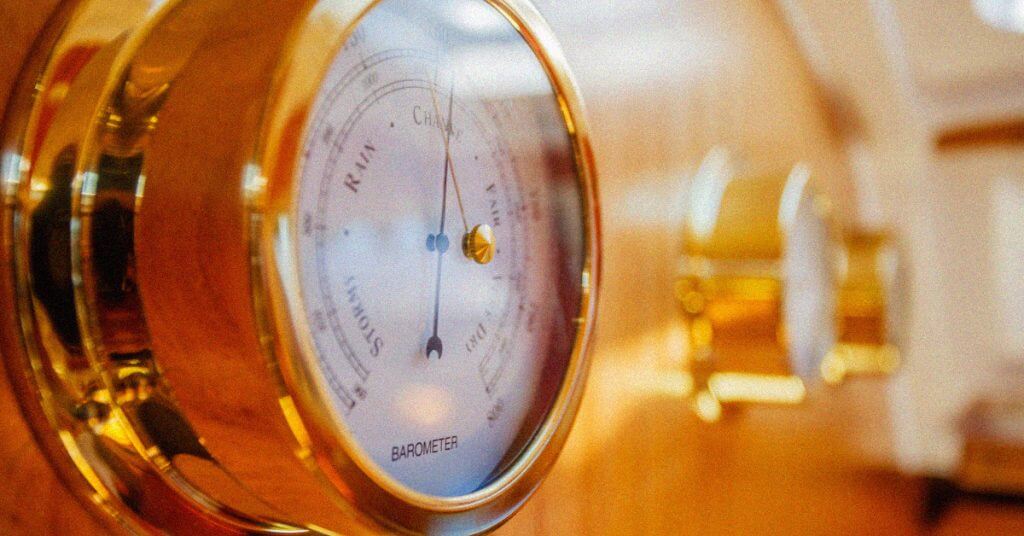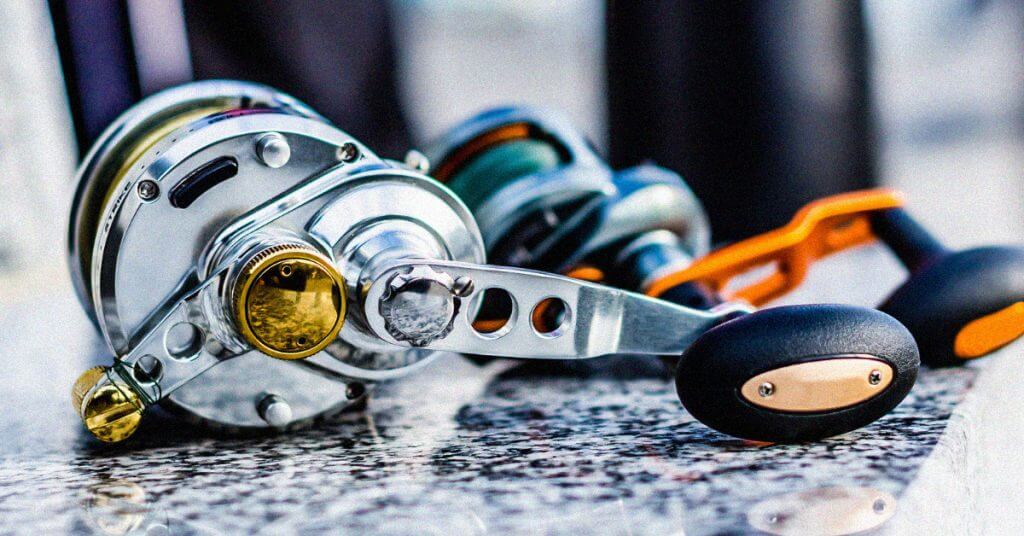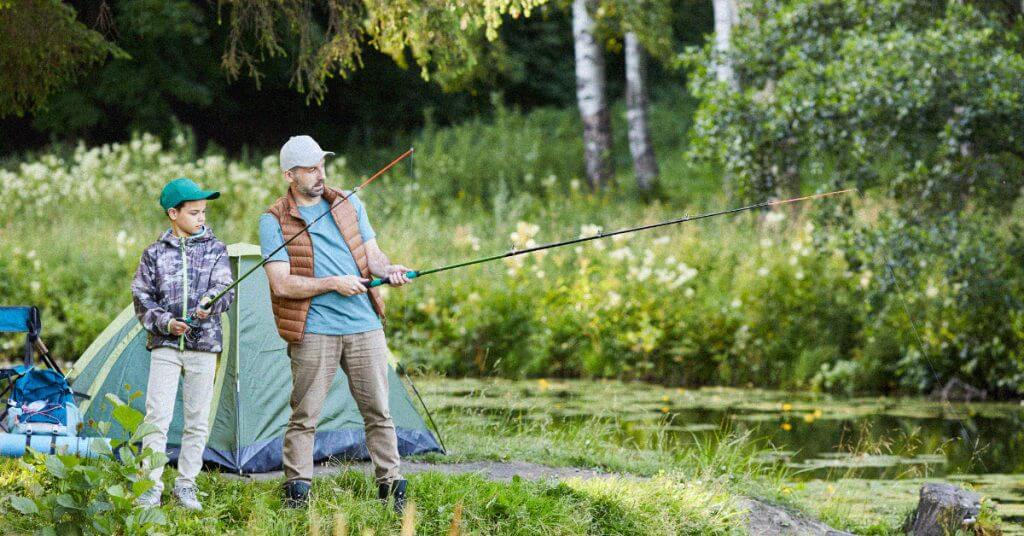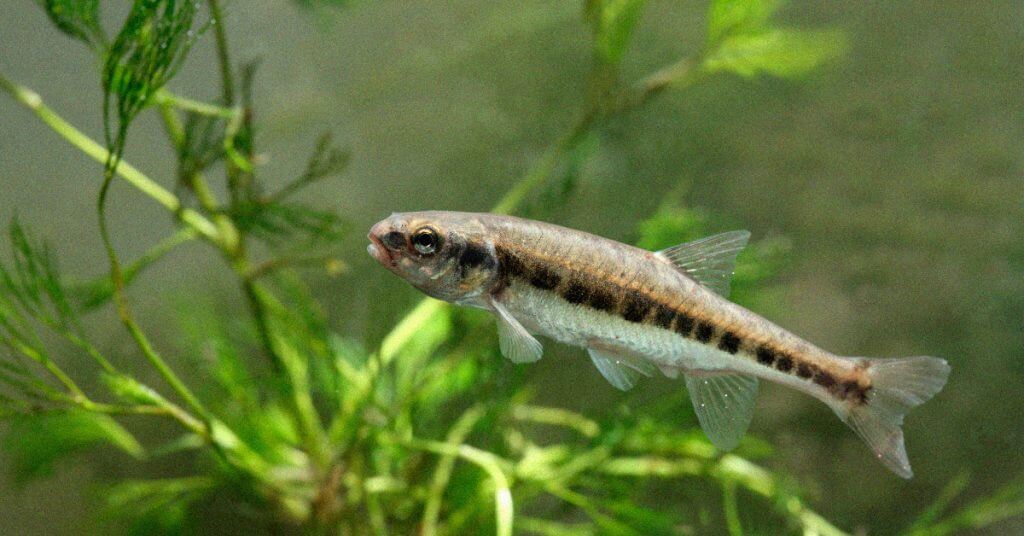Every year I get the great opportunity to talk to people all over the country about their fishing season. Their season ends in November and while they’re all hanging up their rods, I’m ready to start fishing for bass in the winter.
This is made possible because I have a (fairly) expert-level understanding of how bass behave in the cold, how they approach your bait, and how you need to present it.
My goal is to help extend your bass season so you too can catch them during the winter. It doesn’t have to end when it gets cold and with the right knowledge gained from this guide, you’ll be better equipped to catch bass no matter what the temperature is outside.
Wesley Littlefield, the YourBassGuy.com Community Coordinator, offers several winter bass fishing tips in this YouTube Video.
What You Need for Bass Fishing in Cold Weather
First off, here are some of the essentials that will get you started with wintertime bass fishing:
- Spinning or casting rod based on your preferences
- Cold weather gear such as waders, boots, and gloves
- Slow moving fishing lures like jigs, spoons, and blade baits
- Heating source to keep you warm (I recommend a Mr. Heater)
NOTE: Keep in mind that the best ice fishing gear is great for cold water fishing as well. This gear will help keep you warm and safe in the snow and ice even before the water freezes over.
How to Catch Bass in the Winter
Let’s talk about winter bass fishing. This time of year is challenging for bass anglers but with the right steps, you can master it. Here are ten important steps to follow when fishing for bass in the winter.
1. Choose The Right Lure Type
The first thing you’ll need to think about is grabbing the correct lure for the season. You can’t use the same strategy you use when the water is warm, no matter what way you look at it. Winter fishing techniques require finesse, but they also require a bit of preparation. Fast-moving lures and excessively noisy ones won’t work when the water temperatures drop.
You’re going to want to use bottom feeders and slower moving lures like jigs, spoons, and blade baits.
I’d stay away from lipless crankbaits, suspending jerkbaits, spinnerbaits, and other fast moving lures during the winter months.
Always go as natural as possible with the color and try to imitate the fish’s color in the water you’re fishing.
For a full breakdown on this topic check out my article on the best winter bass lures.
2. Slow it Down
You need to slow down your presentation when the water temperatures drop. Winter largemouth bass fishing requires you to think like a fish. The water is cold, their metabolism is slow, and they’re not feeding much, so they will never chase a fast-moving topwater spinnerbait halfway across the pond; it won’t work.
You need to drop something right in front of their face, make the bass think it’s almost dead, and move it slowly and erratically, so they think they’ve got an easy meal on their hand. Once you do that, you’ll have no problem retrieving them because they won’t put up much of a fight.
3. Size it Down
In addition to presenting slower, you’ll also want to present a smaller lure. Small baitfish are a great live choice but if you don’t have a means of keeping them alive, go with a small football head jig or spoon with some red on it.
The bottom line is, your strategy needs to stay congruent with the weather. If it’s cold and the water temperature is near freezing, use the smallest jig head you can find with a small Senko or swimbait.
Doing so will present less of a threat to the bass, and they’ll think they stumbled upon an easy opportunity for a meal.
4. Go Neutral
Color is also an important factor in the winter. If you can find baitfish in the water, see what color they are, and mimic them. If not, go neutral whenever possible.
In the winter, you’ll want to use brown, green, white, grey, and black. Again, the idea here is to present as little of a threat as possible, and bright neon colors look intimidating, so the bass will leave it alone.
5. Know Where to Look
The best tip someone ever told me about finding bass in the winter is to add 10-20 feet of water to where you would normally fish. Of course, you can’t know this without fish finders and depth checkers, but you can estimate it even if you don’t have electronics.
So, for example, if you tend to fish 30 feet away from the shoreline during the summer, you’ll want to add 20 feet to that in the winter because bass prefer deeper waters when the temperature is cold. I’m not saying go to the deepest part of the water but simply add a little depth, and you can increase your chances of catching more bass.
Water clarity is also a huge factor in the winter. If the water is murky, the baitfish will run deeper. If you have clear water, the baitfish will come closer to shore.
Pay attention to run-off and snowfall. If you recently experienced a heavy snowfall that hasn’t melted yet, chances are the water is clear, so you’ll want to head closer to shore.
If you’re dealing with a lot of snow melting due to increasing temperatures, the run-off is probably causing the water clarity to decrease, so you’ll want to take your fishing further away from the shore.
6. Time it Right
As previously mentioned, you need to change your mindset when it comes to fishing in the winter. When the water temperatures are warm, we know that the best times to fish for bass is first thing in the morning and right at dusk.
When you’re fishing in the winter, you’ll want to fish the middle of the day because this is when the water will be the warmest during the day. Once the sun has hit the water for a while, the baitfish will start to move around, and this is when you stand the best chance of catching more bass.
While that’s the case 99% of the time, some expert bass anglers actually recommend fishing early in the morning for smallmouth bass. They suggest getting on the water right as the sun is coming up, which is interesting because it contradicts anything I’ve ever learned.
If you want to give this strategy a try, I would recommend fishing the bottom near some of the lake’s deep water. Bass tend to hide in schools during the winter, and they look for little drop-offs and holes where baitfish and other food might hang out
7. Don’t Forget the Shore
One of the most important winter bass fishing tactics to learn revolves around two main points:
1. Shoreline
2. Baitfish
You need to understand these two points and why they’re critical for winter fishing.
Baitfish tend to hug the shores near rivers because this is where the most oxygen is in the water, and the temperature tends to be a bit warmer. As we all should know, bass follow the baitfish, so this is where you’re likely to find more bass.
If you’re fishing from the shore, this makes catching bass easy because you can cast parallel with the shoreline and clean up all day long. I find it more enjoyable to fish from the shore during the winter because it’s a little easier to stay warm, and if I’m fishing alone, it just makes me feel more comfortable.
8. Master your Understanding of Water Temperature

Less than 40 degree water
If you’re fishing in less than 40 degree water, you’re in for a challenge. Right now, the bass are incredibly inactive, and their metabolism is super slow, so they’re not feeding much, and they’re preserving all their energy by taking on the simplest of meals.
For you to have success fishing during this time, you need to throw your lure right in their face and present it slow enough for them to get it.
40-50 degree water
The 40-50 degree temperature range is prime fishing in the North so expect to find bass in this temperature range most frequently during late winter in the months of January and February.
Bass in this temp will slow down quite a bit, but they’ll still have feeding periods each day, and this is when you need to capitalize by using the right lures and offering a slow but calculated presentation.
50+ degree water
At 50+ degrees we have prime fishing temperatures where bass are highly active, but you would only likely experience these types of temperatures in the winter in the Southern states, so this doesn’t help everyone North of the Mason-Dickson.
Where you might find temperatures like this is when the seasons are changing from fall to winter and winter to spring. Expect to slow down and size down your presentation a little, but big bass will still be active during the morning, midday, and evening.
9. Bring the Right Gear
While this isn’t a direct tip perse, I wanted to talk briefly about safety and gear. Depending on your location, fishing in the winter can be dangerous because of frigid temperatures and dangerously cold water. You need to make sure you have enough layers to keep yourself warm and plenty of backup gear in case you fall in or get wet.
I recommend wearing as many layers as possible in the car on the way to the water and keeping the heat on so you can build up some warmth before getting out. Wear multiple layers with socks, ice fishing boots, and fingerless gloves so you can maintain full movement of your fingers.
The most important tip is to make sure someone knows where you are. Even if you live alone, tell a parent, friend, or neighbor that you’re going fishing, and you’ll be back at a certain time. You never know what can happen, and you need to make sure someone is looking out for you.
10. Keep it Simple
You don’t need to overcomplicate these winter bass fishing tips, but the most important one to remember is to stay calm and remain patient because winter bass fishing is not easy, but it’s also not impossible.
It will take some time for you to learn, and that can get frustrating but don’t give up.
You won’t get as many nibbles as you do during the summer and spring, but chances are you’ll get more interested bass if you follow all the tips outlined in this guide. Have a good amount of patience and be sure to present every lure slowly but erratically with time in between each jerk.
Frequently Asked Questions
Can you catch bass in the winter?
Yes, you can catch bass in the winter. The key is to understand their habits as their metabolism slows down so they feed on smaller, slower moving baitfish.
What do bass eat in the winter?
In the winter bass eat baitfish like shad and minnows. It’s the same diet they have all year, they just eat less of it.
Final Thoughts
If you enjoy fishing for cold water bass in the winter, I’m hoping this step-by-step guide was helpful. Whether you did or you didn’t, feel free to leave me a comment with what you think. Fishing is a pretty subjective sport and I love hearing what has worked for others.
The bottom line is that winter bass fishing is all about attitude and understanding.
We can’t approach this type of fishing like we do warm weather fishing. It’s so important that we understand how bass habits change and how we need to adapt rather than think we can force them to do what we want. It never works that way and never will.
Remember to slow it down, size it down, and think like the bass. If they’re feeling slow and sluggish, you need to replicate that as well.
Good luck out there!





You did not suggest plastic worms etc. Why not? If there are bluegills in the lake or pond would a green weenie be a good choice if fished slowly?
Hey Randy, I didn’t suggest them in this guide but also didn’t necessarily suggest against using them either. It’s tough sometimes to pick something that’s the “best” because everyone has their own opinion based on how they fish and what they like to use. I definitely think you could use any plastic worm you like if you slow it down.
Also, consider checking this article out where I recommend some specific lures: https://yourbassguy.com/fishing-lures/best-winter-bass-fishing-lures/
Thanks for reading!